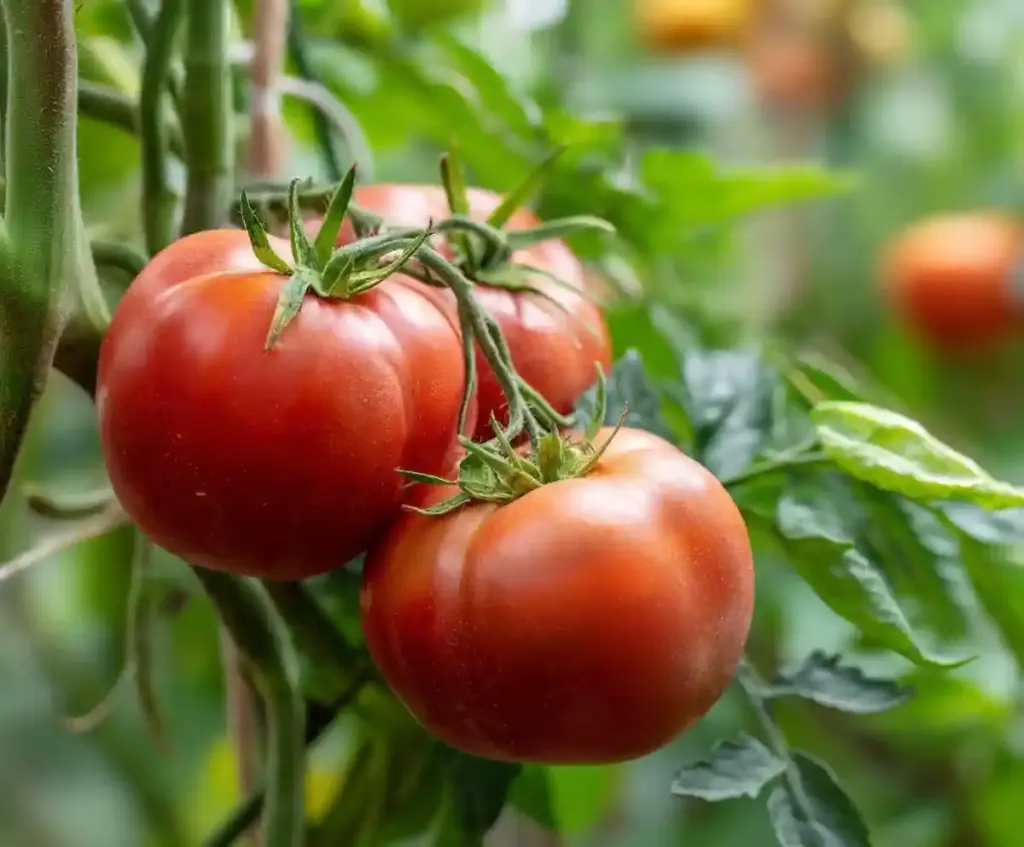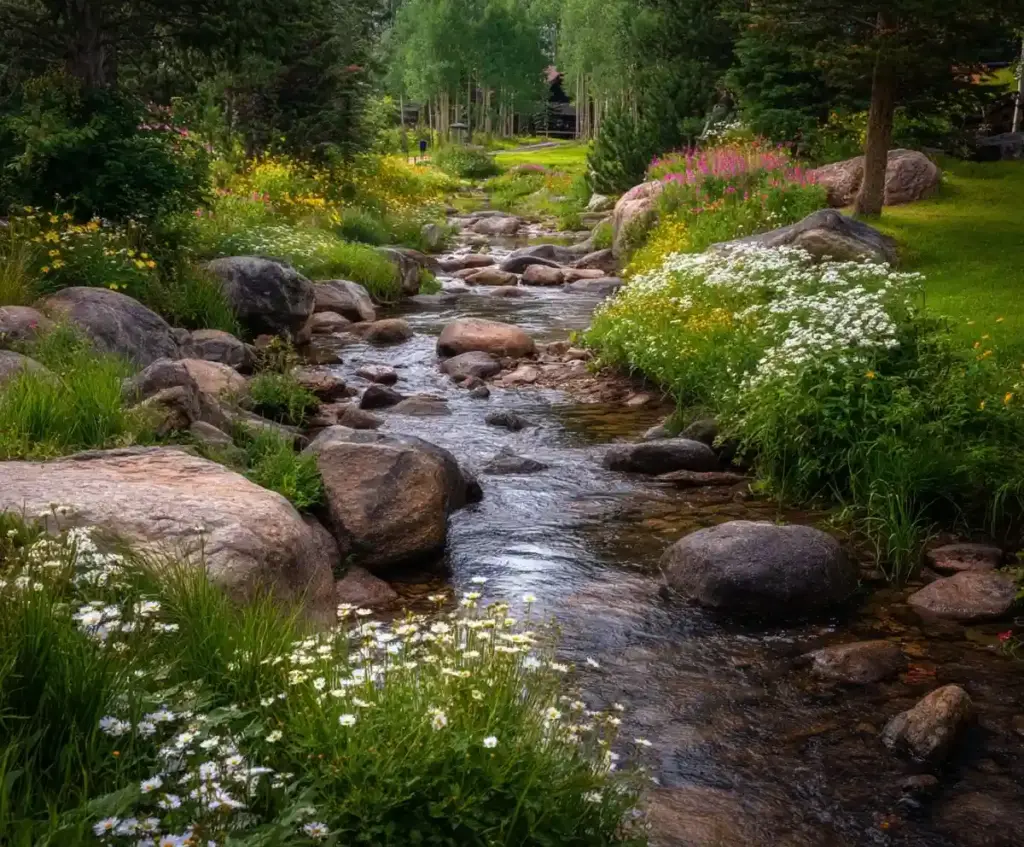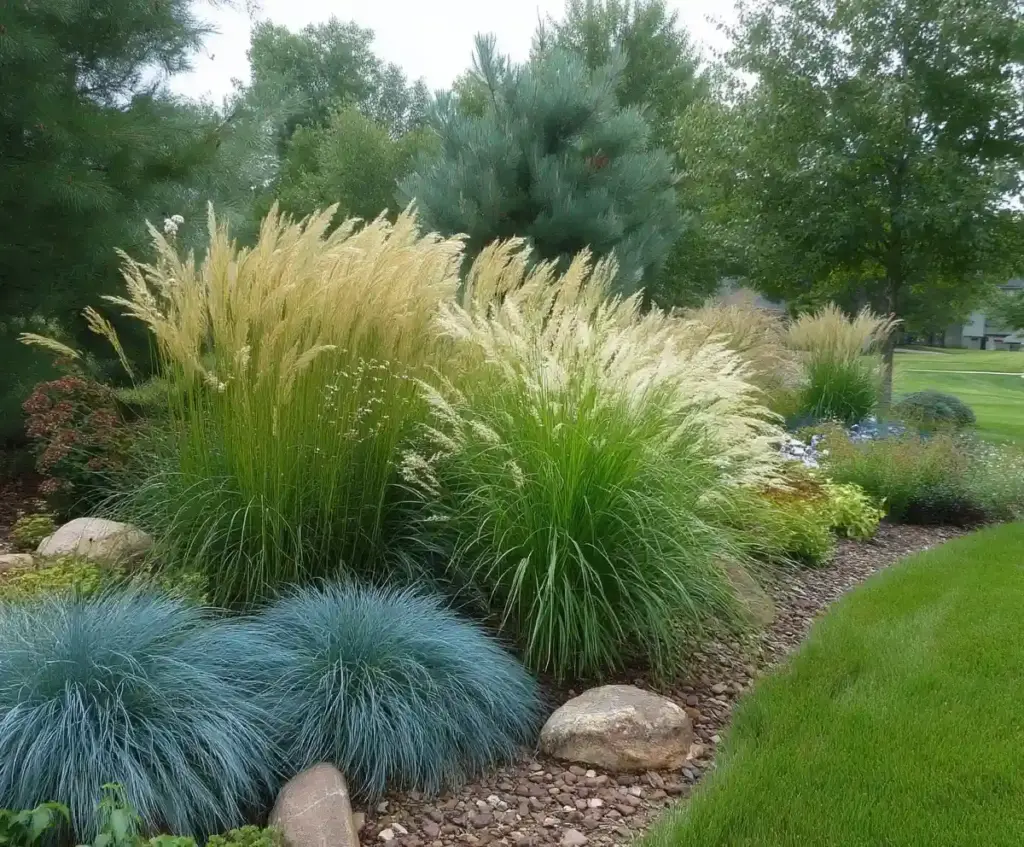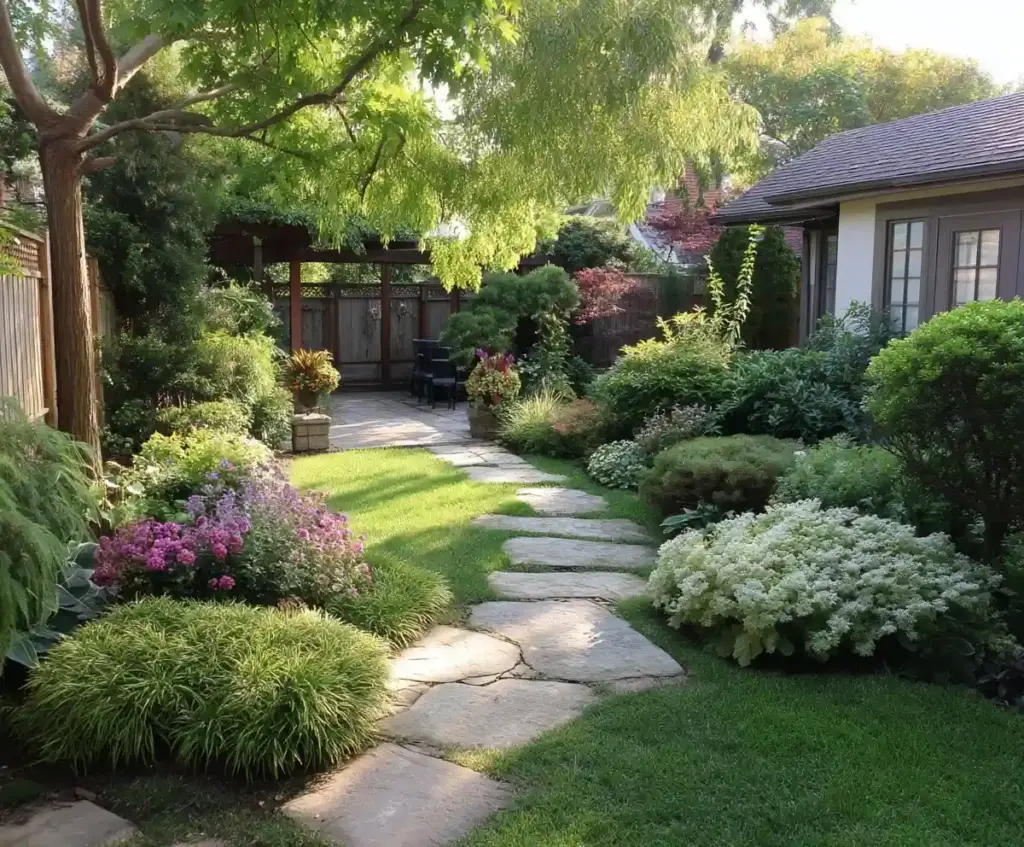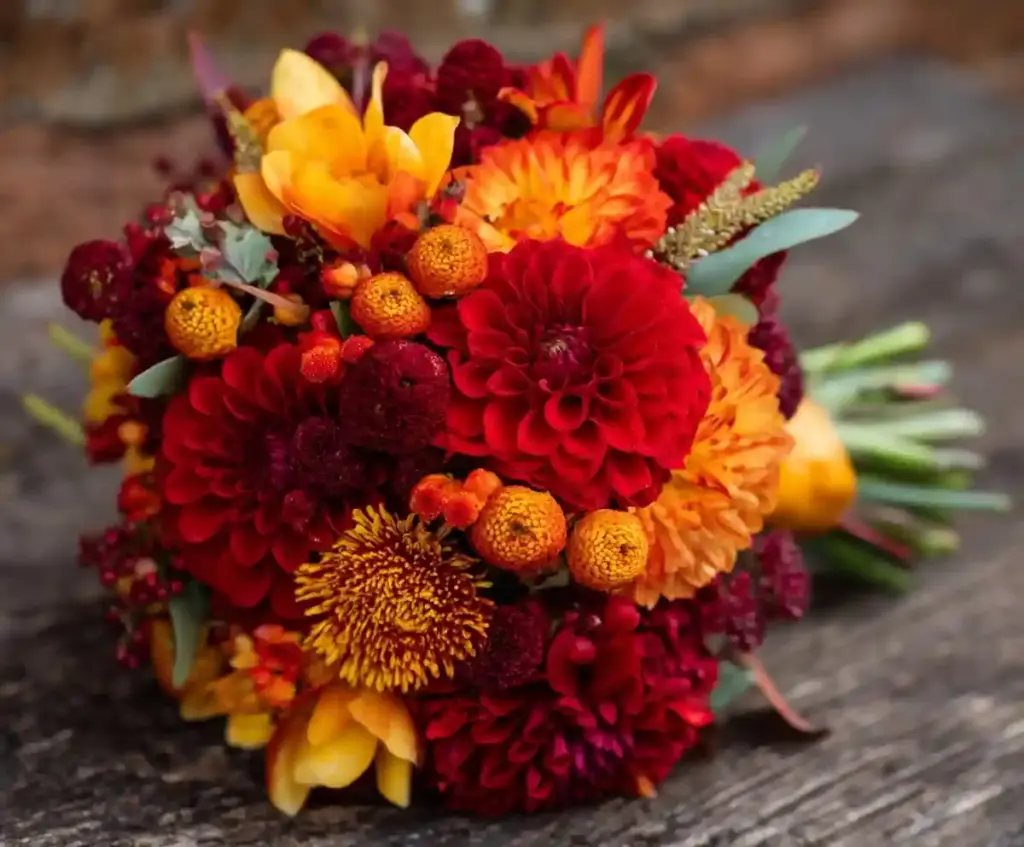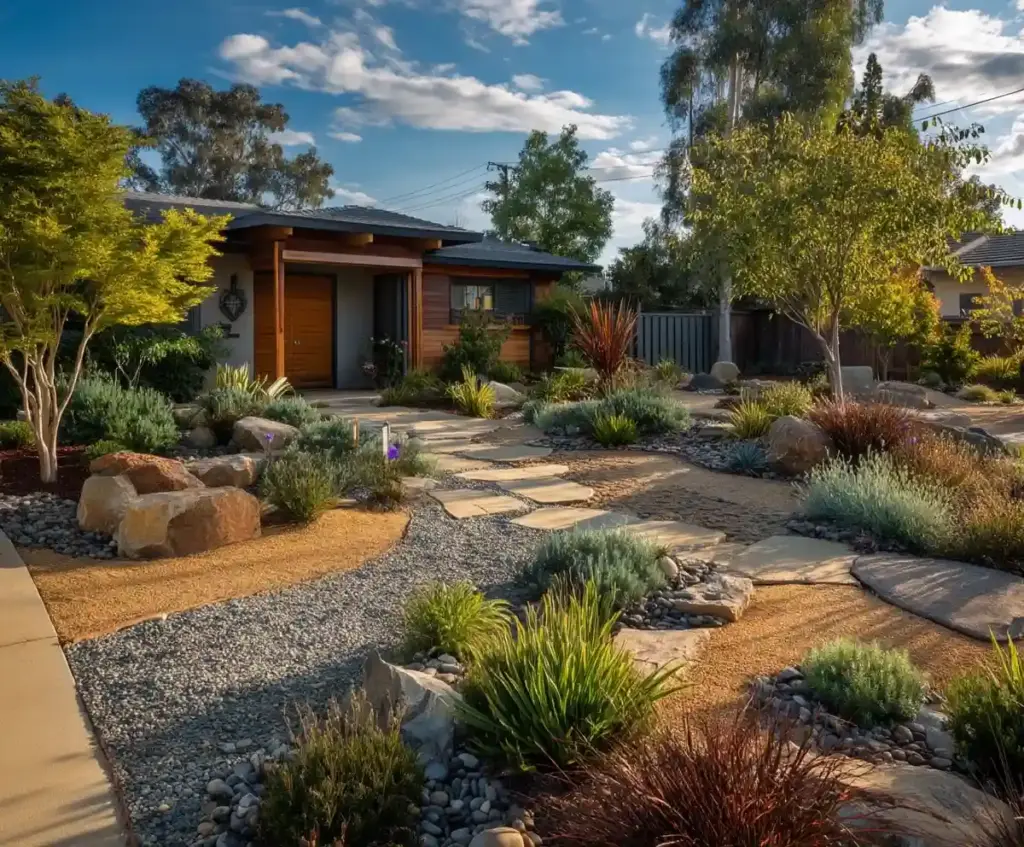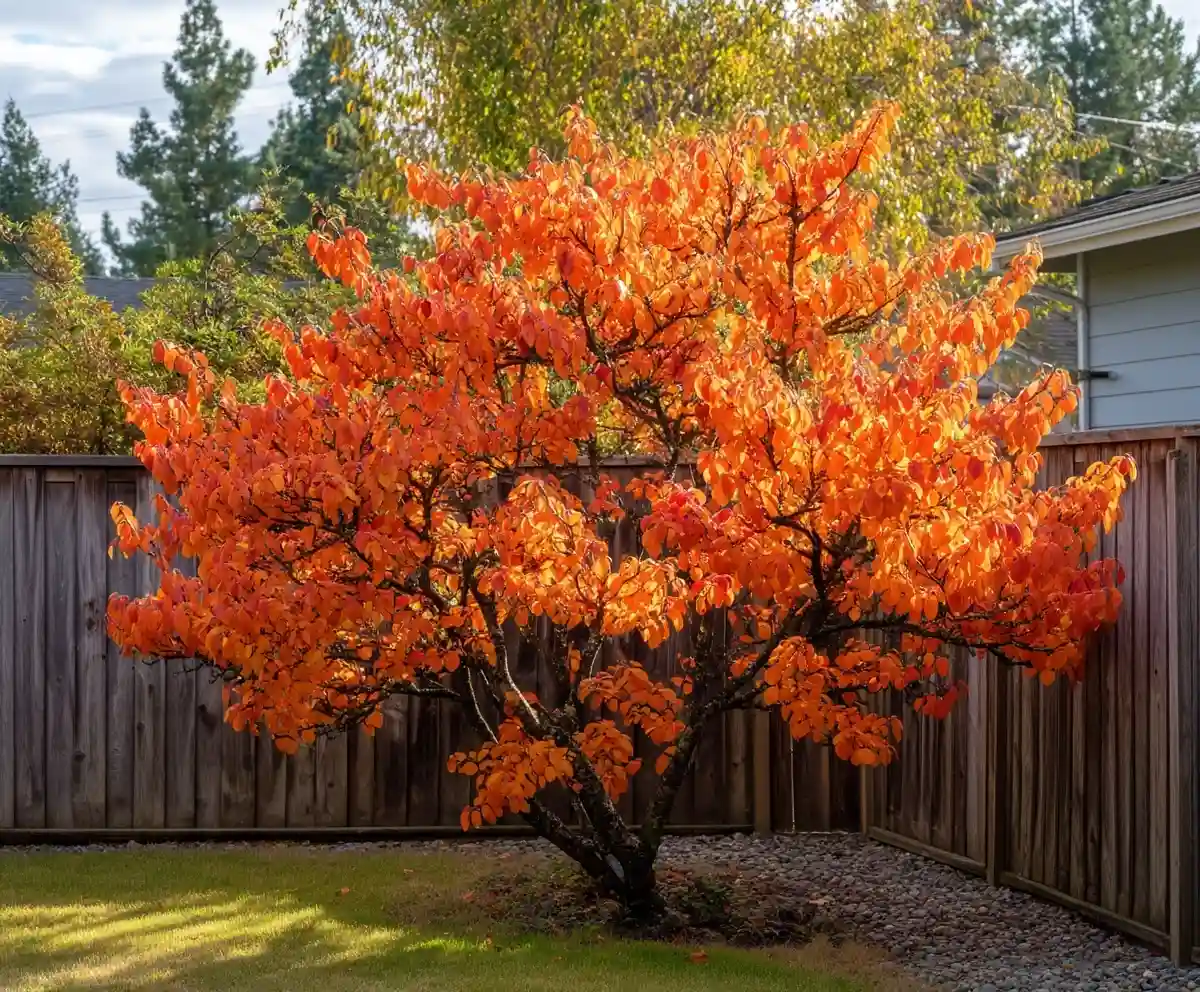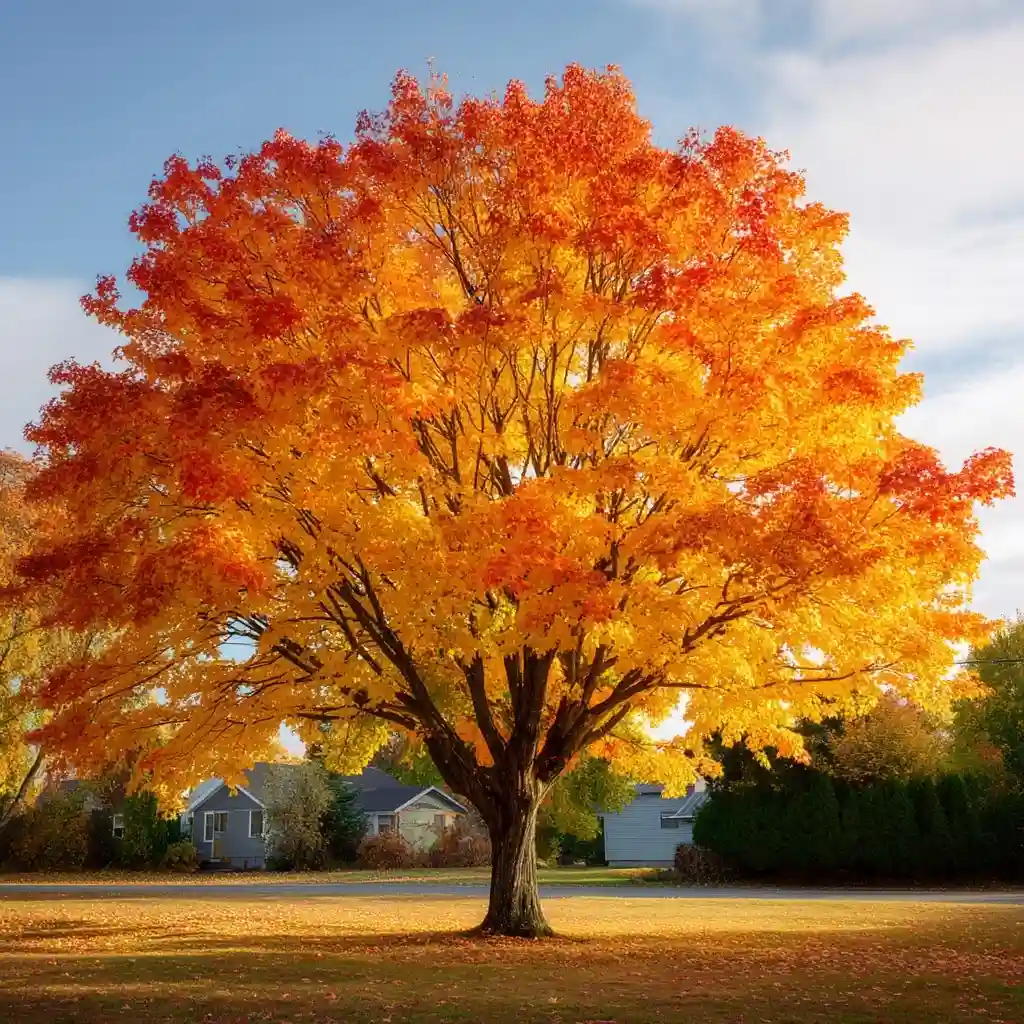Best fall trees for color can completely transform your yard into a warm, glowing masterpiece when autumn arrives. As summer fades, these trees put on a dazzling show of reds, golds, oranges, and purples, turning even the simplest landscape into a seasonal highlight. Whether you have a sprawling lawn or a cozy garden space, the right trees can deliver brilliant foliage year after year. From towering maples to smaller ornamental varieties, these colorful choices thrive in a range of climates and bring more than just beauty—they offer shade, seasonal interest, and even wildlife benefits.
Table of Contents
1. Sugar Maple
The sugar maple is one of the best fall trees for color, offering a rich mix of golden yellow, deep orange, and fiery red leaves each autumn. Native to North America, this majestic tree can grow between 40 and 80 feet tall, making it a standout focal point in any yard. While it grows slowly, the payoff is worth the wait—each season brings a slightly different display, so no two years look exactly alike.
Sugar maples prefer full sun to partial shade and thrive in medium-moisture, well-drained soil. Beyond their beauty, these trees are famous for their sap, which can be transformed into maple syrup—a sweet bonus for those willing to tap and boil it down in spring. Hardy in USDA zones 3 to 8, they make an excellent choice for long-term landscape investment.
2. Red Maple
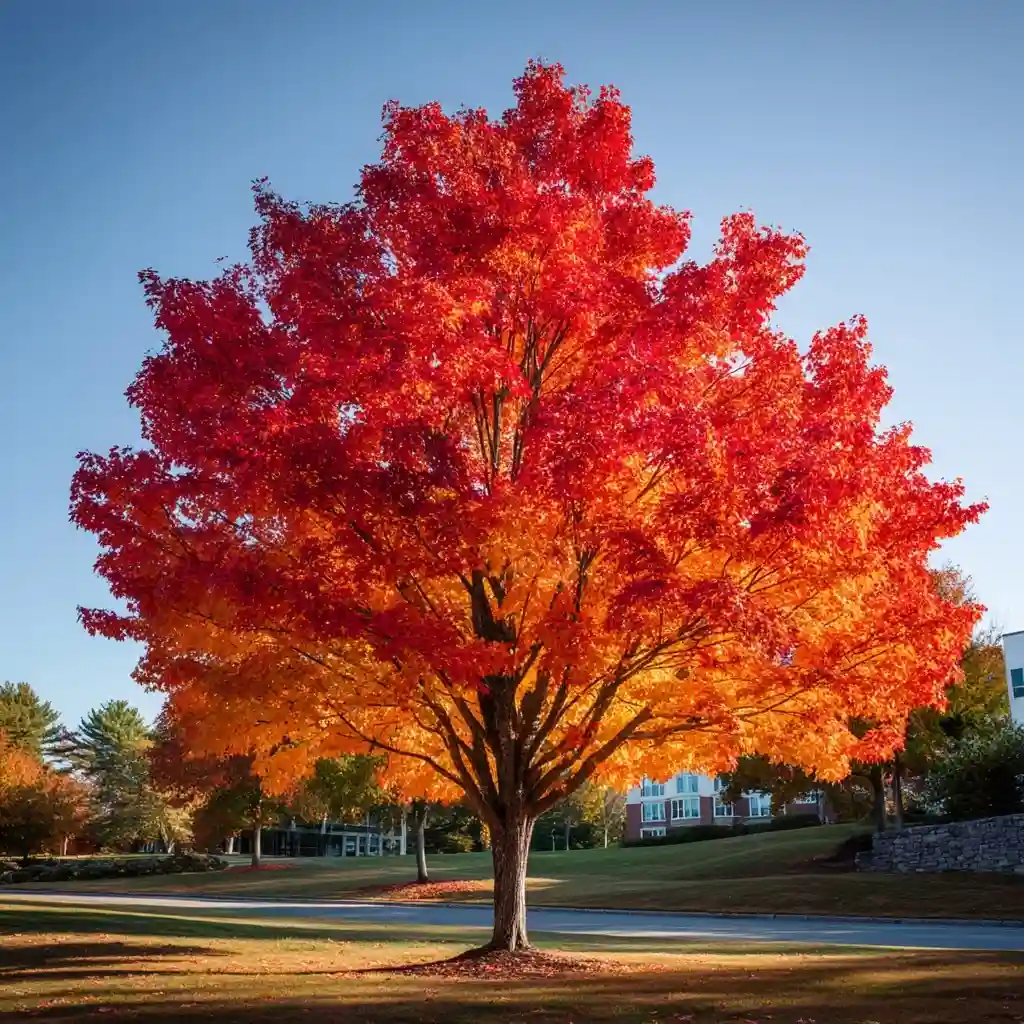
The red maple easily earns a place among the best fall trees for color, thanks to its vibrant foliage that can range from deep crimson to golden yellow. True to its name, it offers red highlights in every season—buds in winter, flowers in spring, and leaf stems in summer—before bursting into its signature autumn shades.
This fast-growing tree reaches 30 to 50 feet tall and adapts well to different soil types, though it thrives in medium to wet conditions. It tolerates both full sun and partial shade, making it a versatile option for many yards. Hardy in USDA zones 3 to 9, the red maple not only delivers striking fall foliage but also brings multi-season interest, making it a year-round beauty for any landscape.
3. Japanese Maple
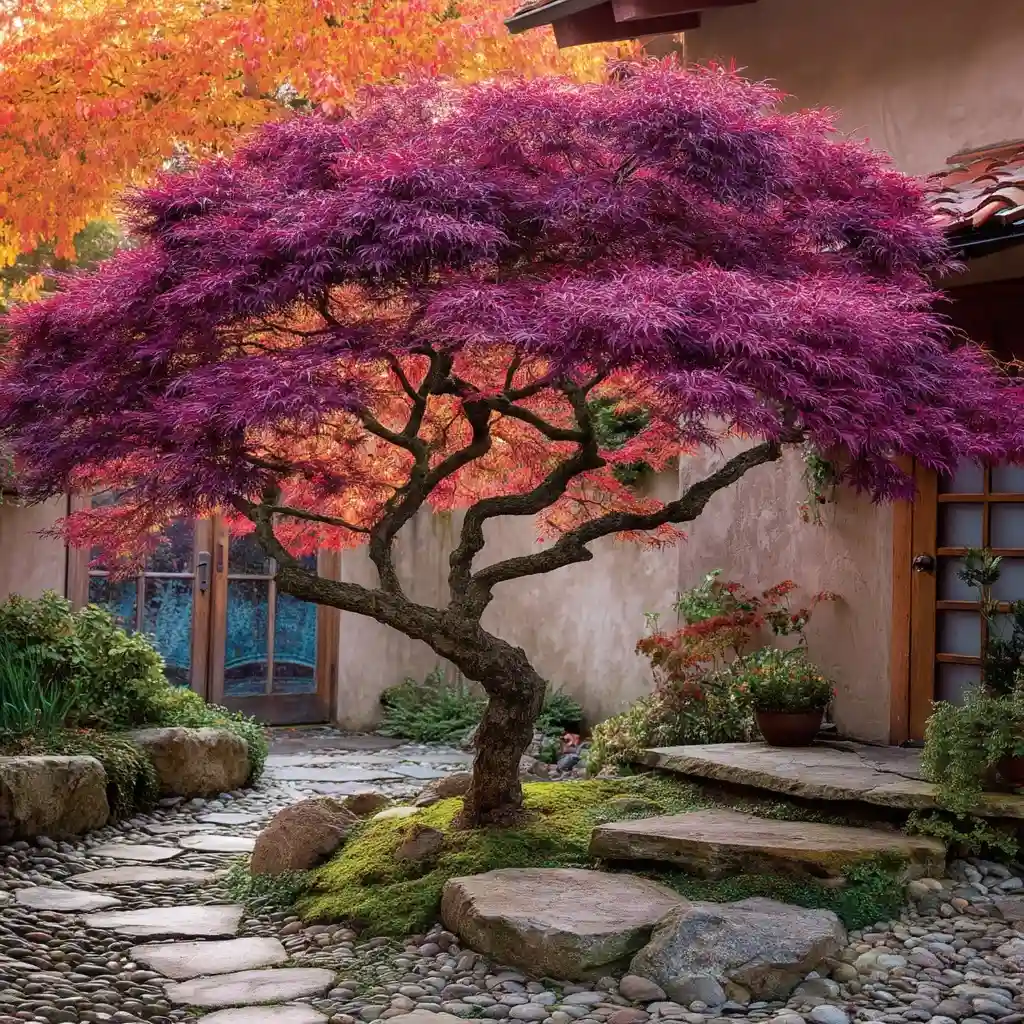
Delicate and eye-catching, the Japanese maple is one of the best fall trees for color in smaller landscapes. Its finely cut leaves shift from vibrant green in spring to rich reddish-purple or crimson in autumn, creating a dramatic seasonal display. Popular cultivars like ‘Crimson Queen’ feature a graceful, weeping form that adds elegance even when the leaves have dropped.
Japanese maples typically grow 10 to 25 feet tall, making them ideal for compact gardens or as a striking accent in larger yards. They prefer rich, slightly acidic soil with consistent moisture, and do best in full sun to partial shade. Hardy in USDA zones 5 to 8, this tree’s slow growth and manageable size make it easy to maintain while delivering exceptional fall color year after year.
4. Black Gum (Black Tupelo)
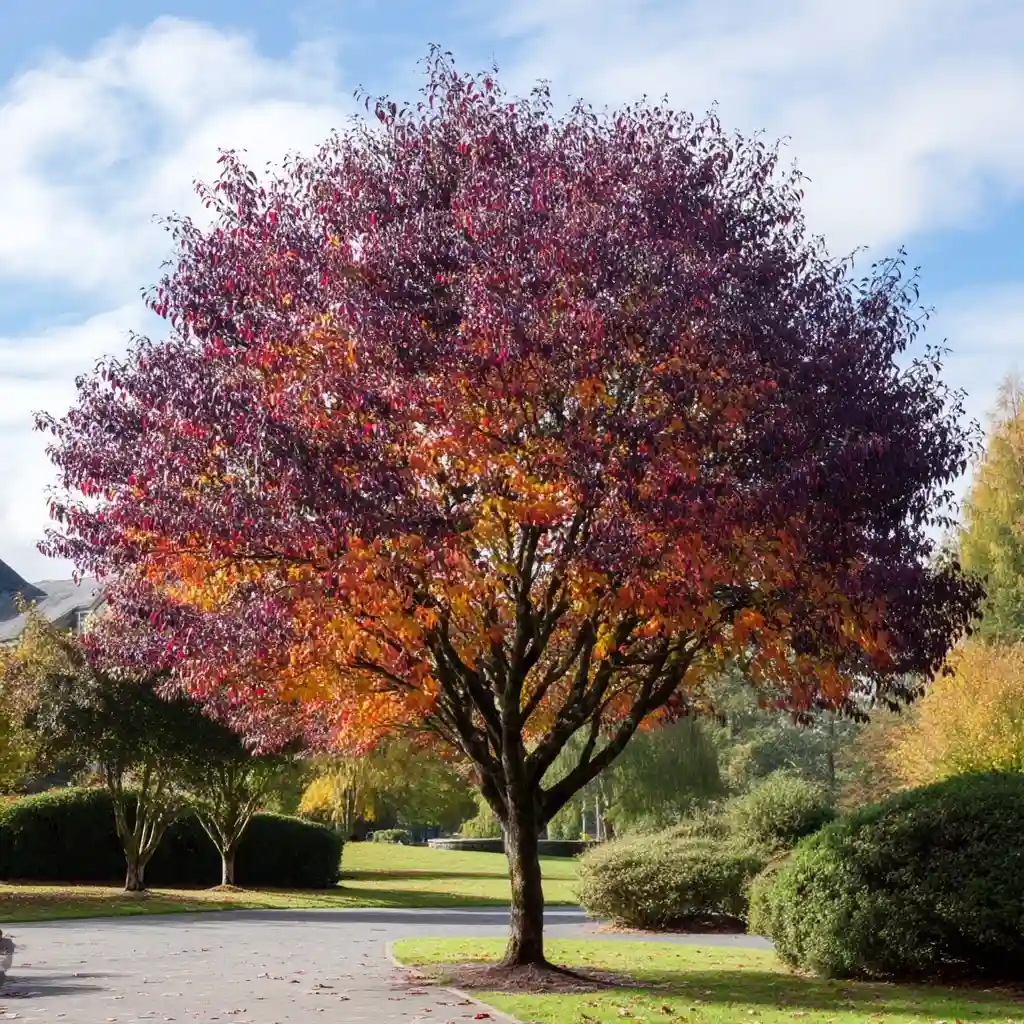
The black gum, also called black tupelo, is among the best fall trees for color if you want a bold mix of shades in your yard. In autumn, its glossy green leaves transform into a blend of yellow, orange, bright red, and even deep purple, making it one of the most varied fall displays of any tree species.
Reaching 30 to 50 feet tall, this adaptable tree thrives in medium to wet soil and can even handle occasional standing water. It prefers full sun to partial shade and grows well in USDA zones 4 to 9. In addition to its beauty, black gum produces small, dark fruits loved by birds, and its late-season flowers provide nectar for pollinators like bees.
5. Witch Hazel
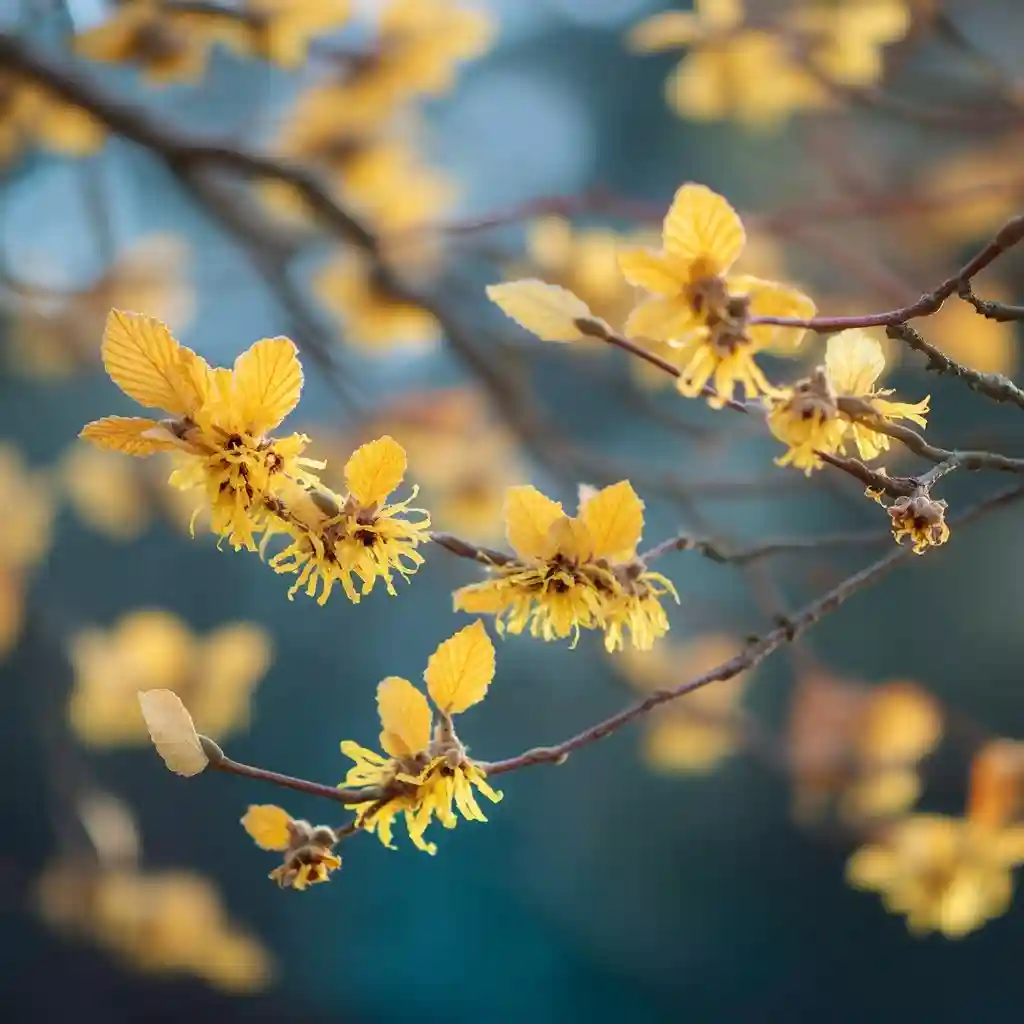
Witch hazel is a versatile choice among the best fall trees for color, bringing a burst of bright yellow leaves just as many other trees begin to fade. Its compact size—ranging from 15 to 30 feet—makes it suitable for both small gardens and larger landscapes. Depending on how it’s pruned, witch hazel can grow as a large shrub or a small ornamental tree, adding flexibility to your planting design.
This hardy plant thrives in USDA zones 3 to 8 and adapts to various soil types, though it prefers moist, well-drained ground. It’s also unique in that its fragrant, ribbon-like flowers can appear in late fall or winter, offering unexpected beauty when most of the garden has gone dormant.
6. Ginkgo
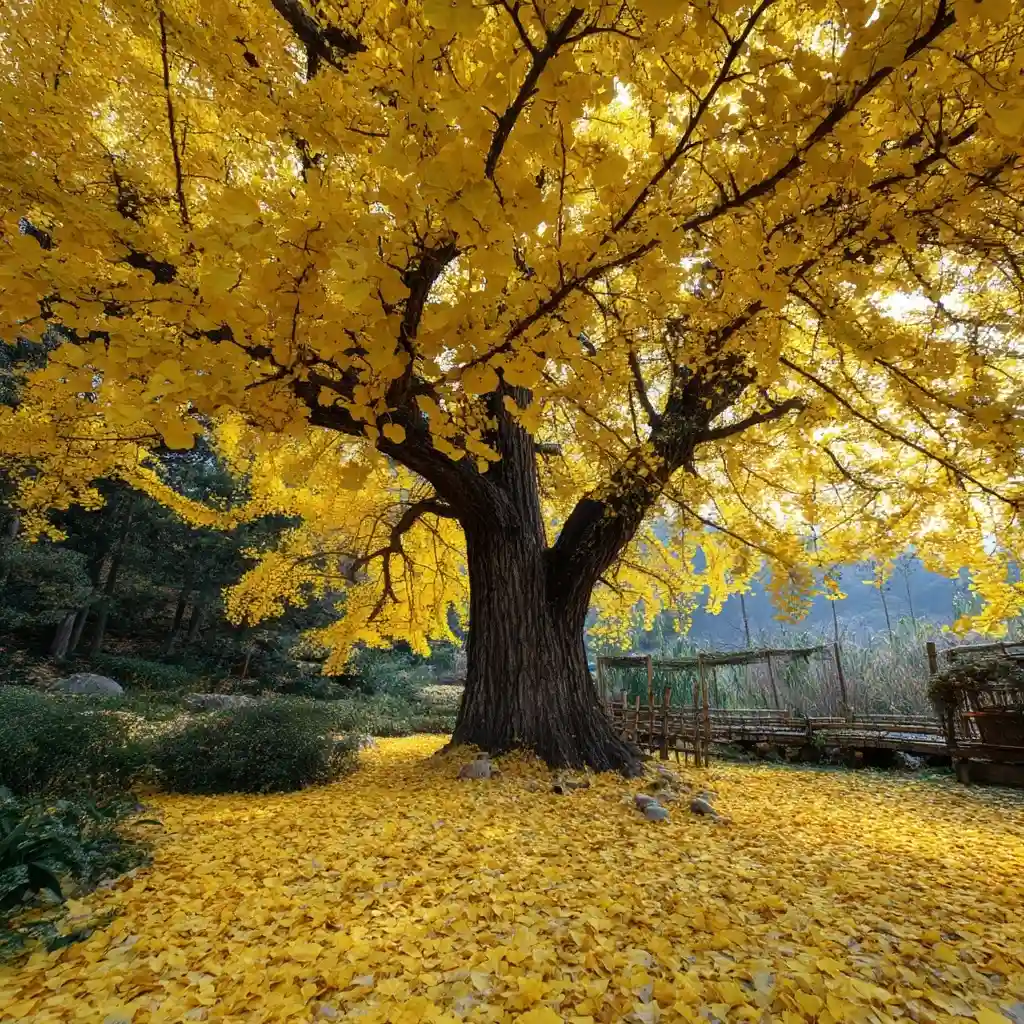
The ginkgo, with its fan-shaped leaves, stands out as one of the best fall trees for color thanks to its brilliant golden-yellow foliage. In autumn, its leaves often change all at once, creating a striking carpet of color when they drop. While ginkgos grow slowly, they can reach up to 100 feet tall over time, making them a lasting legacy tree for your landscape.
Hardy in USDA zones 3 to 8, ginkgos tolerate a wide range of soil types and handle both sun and shade with ease. They’re also highly resistant to pests, diseases, and urban pollution, making them an excellent choice for city or suburban yards. Native to Asia but well-established in the U.S., this tree brings elegance, resilience, and stunning fall color to any setting.
7. Shadblow Serviceberry
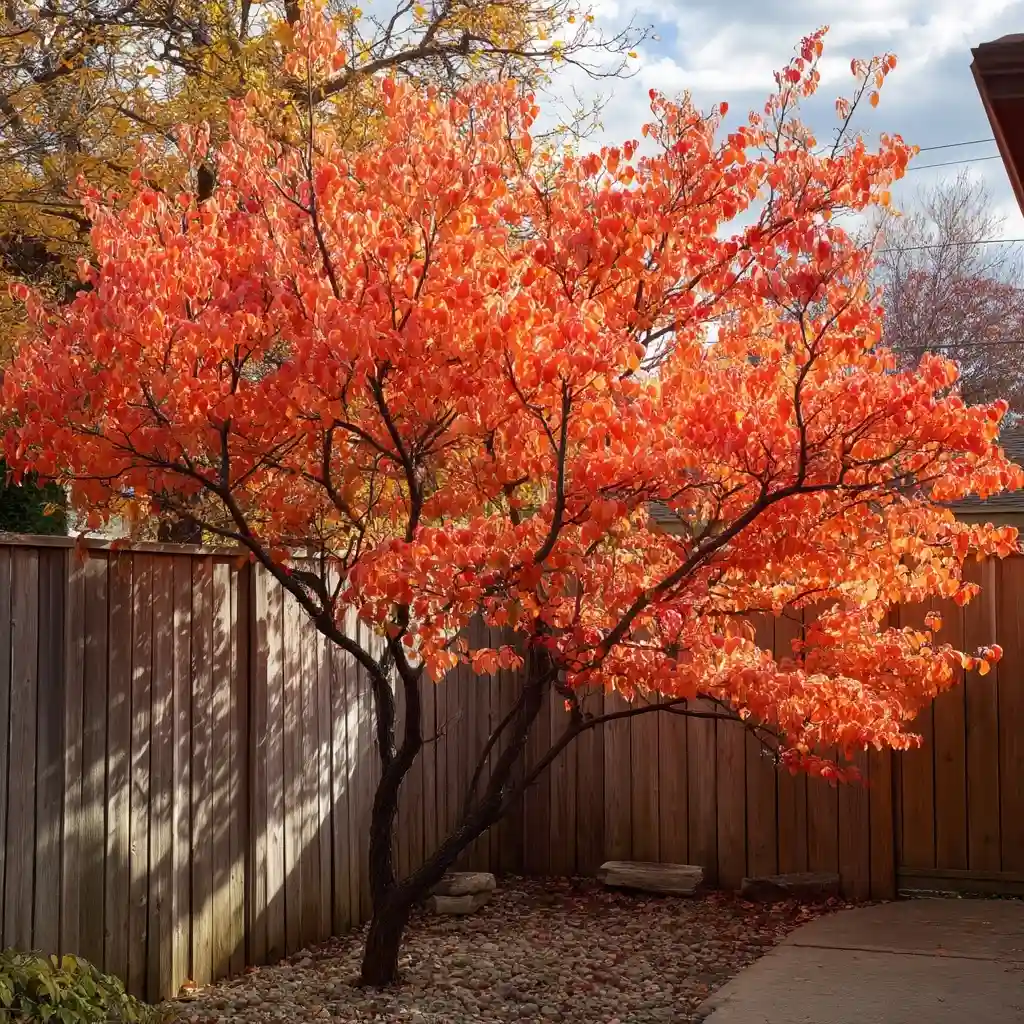
The shadblow serviceberry earns its place among the best fall trees for color with its vibrant orange-red leaves that light up the landscape each autumn. In spring, it puts on an equally beautiful display with clusters of white blossoms, followed by small, edible purple-black fruits that attract birds and other wildlife.
Reaching 25 to 30 feet tall, this versatile tree grows well in USDA zones 4 to 8 and tolerates a wide range of soil types as long as drainage is good. It thrives in full sun to partial shade, making it suitable for many planting locations. With its multi-season interest, compact size, and wildlife-friendly features, the serviceberry is a smart choice for both ornamental and functional landscaping.
8. River Birch
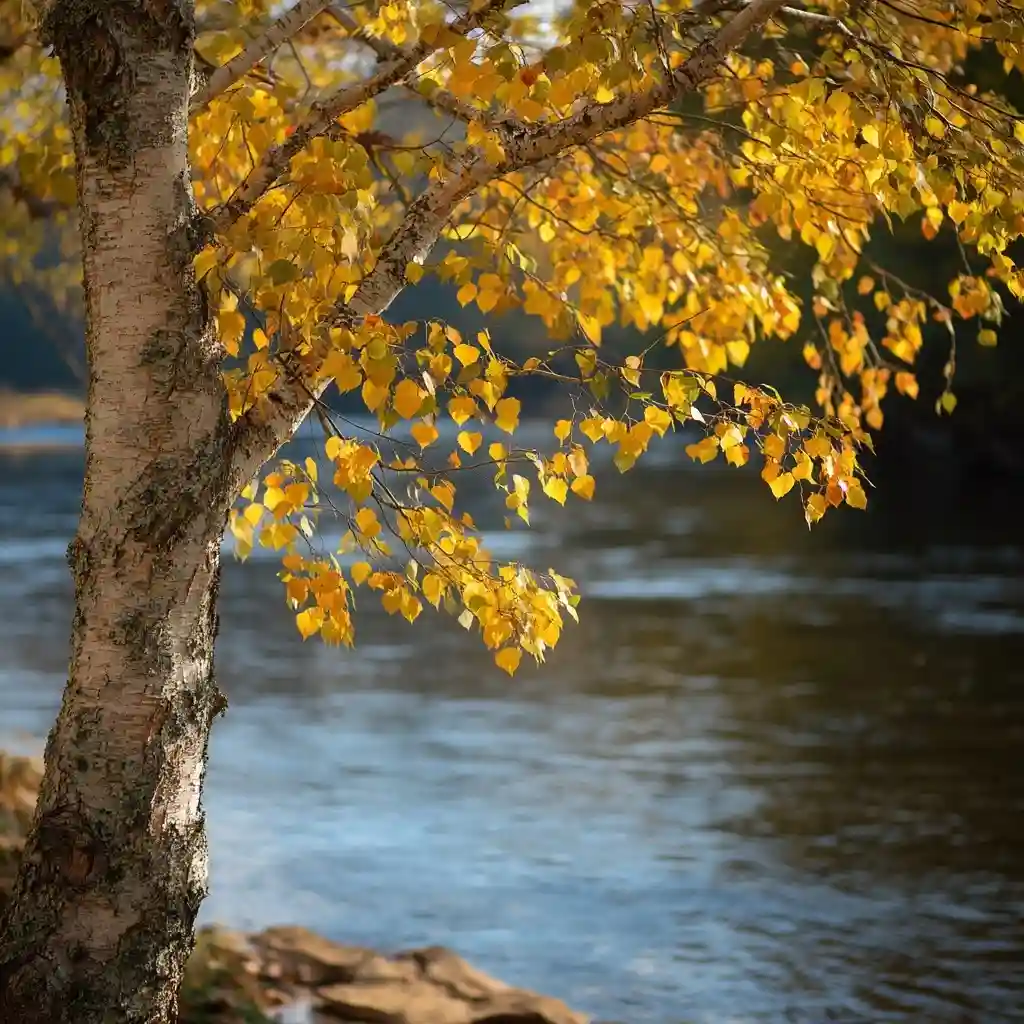
The river birch is one of the best fall trees for color if you want both seasonal beauty and year-round interest. In autumn, its leaves turn a rich golden yellow, while its distinctive peeling bark adds texture and charm through every season. This combination makes it a standout in any yard, even after the leaves have fallen.
Growing 40 to 70 feet tall, the river birch thrives in USDA zones 4 to 9 and adapts well to both moist and periodically wet soil conditions. Although it’s naturally found along riverbanks, it performs well in home landscapes across much of the United States. Its tolerance for different environments, paired with its striking looks, makes it a reliable and attractive choice for homeowners.
9. American Sweetgum
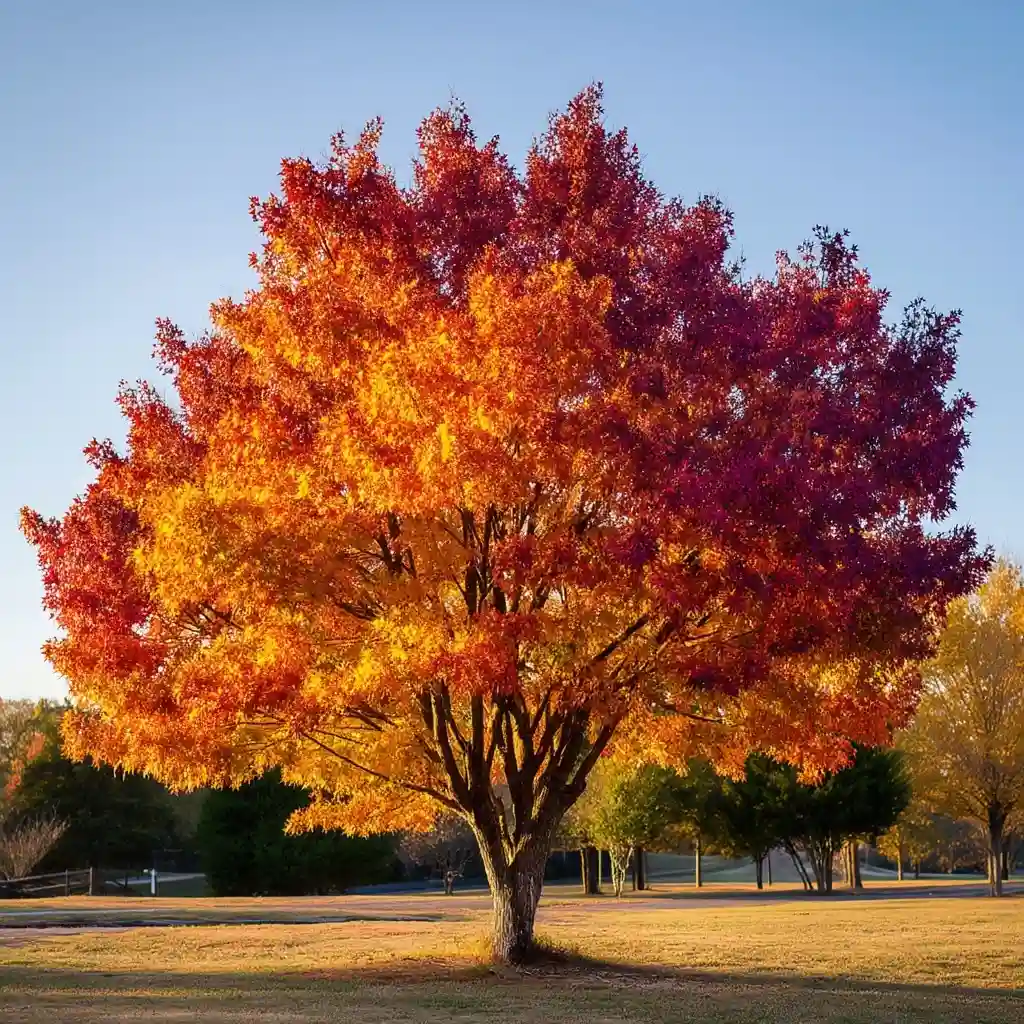
The American sweetgum is a showstopper among the best fall trees for color, delivering a kaleidoscope of yellow, orange, red, and even deep purple foliage in autumn. Its star-shaped leaves and spiky seed pods give it a distinctive look, and the colors often last well into late fall, extending the season’s beauty.
This tree can grow up to 80 feet tall and thrives in full sun with medium-moisture, well-drained soil. Best suited for USDA zones 5 to 9, the sweetgum prefers slightly acidic conditions and may not perform as well in alkaline soils. While its seed pods are decorative to some and messy to others, its unmatched range of fall colors makes it a favorite for large landscapes.
10. Northern Red Oak
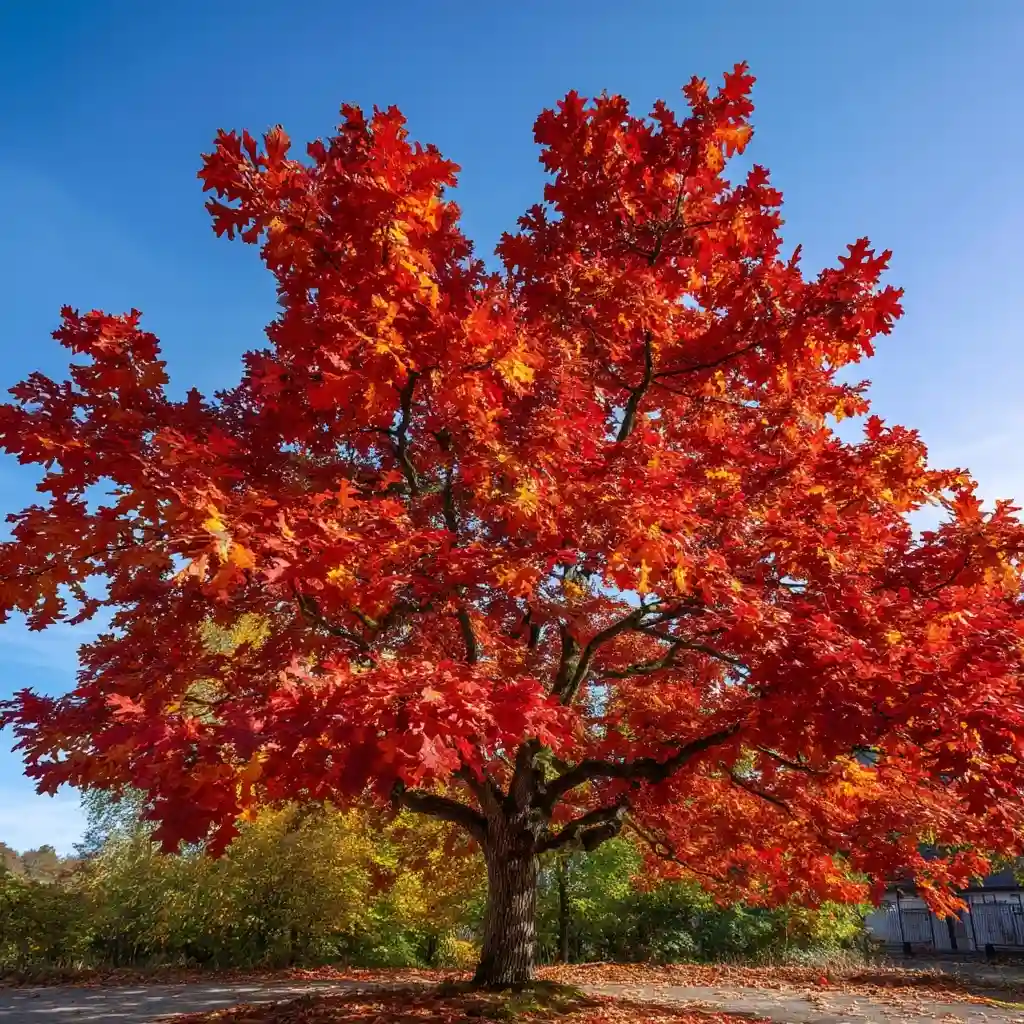
The northern red oak stands tall—literally and figuratively—among the best fall trees for color. In autumn, its large, lobed leaves turn a vivid red, adding a bold statement to any yard. The color change often happens later in the season, meaning it can extend your fall display when other trees have already dropped their leaves.
Capable of reaching heights up to 80 feet, this tree grows best in well-drained soil and tolerates full sun to partial shade. Hardy in USDA zones 3 to 8, the northern red oak is valued not only for its seasonal beauty but also for its strong wood and long lifespan. Plant it as a focal point, and you’ll enjoy decades of shade and stunning fall foliage.
11. Oakleaf Hydrangea
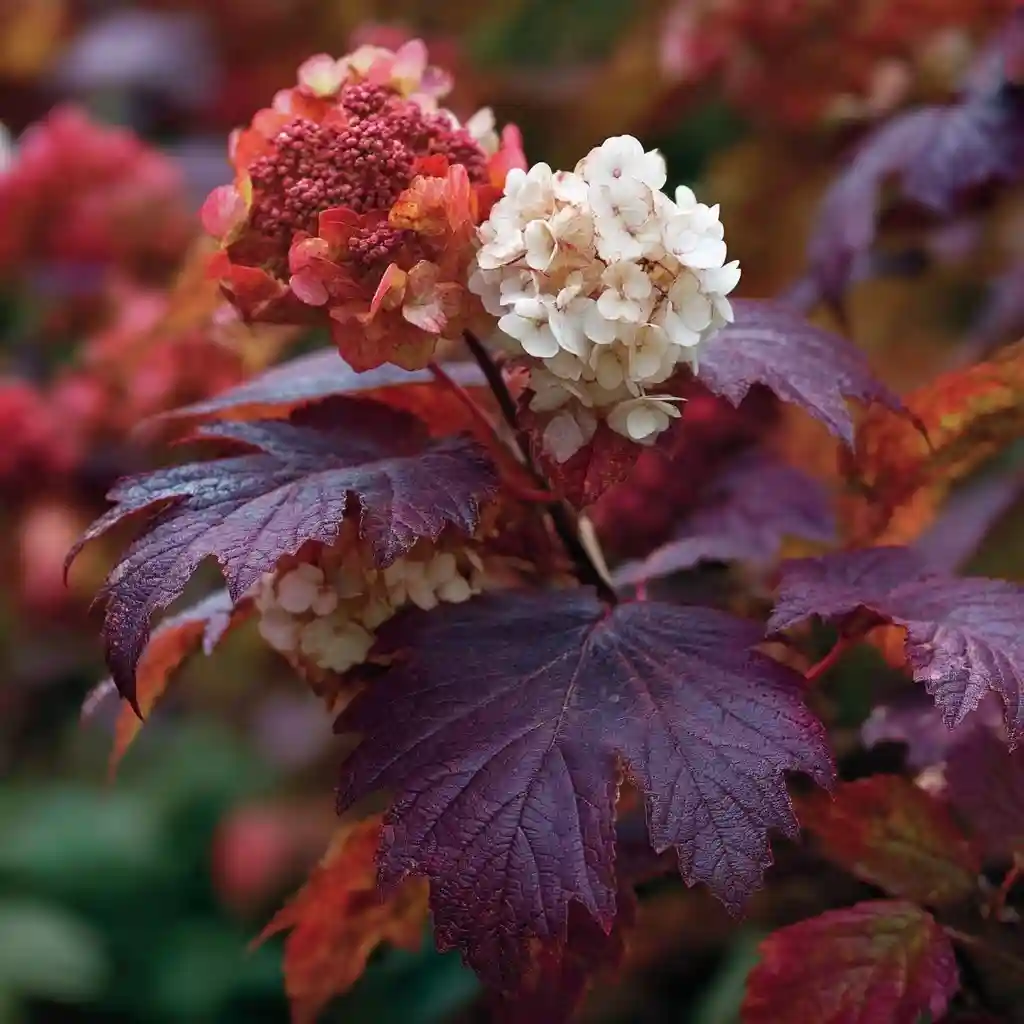
Though technically a shrub, the oakleaf hydrangea earns its spot among the best fall trees for color thanks to its striking autumn display. Its large, lobed leaves shift to deep red, purple, or bronze shades in fall, and unlike many trees, the color often lingers well into winter. In spring and summer, it offers cone-shaped clusters of white flowers that gradually turn pink, giving it year-round appeal.
This versatile plant grows 4 to 8 feet tall and thrives in USDA zones 5 to 9. It prefers rich, moist, well-drained soil and does well in full sun to light shade. Whether used as a specimen plant or grouped for privacy, the oakleaf hydrangea delivers multi-season beauty in a manageable size.
12. Sourwood
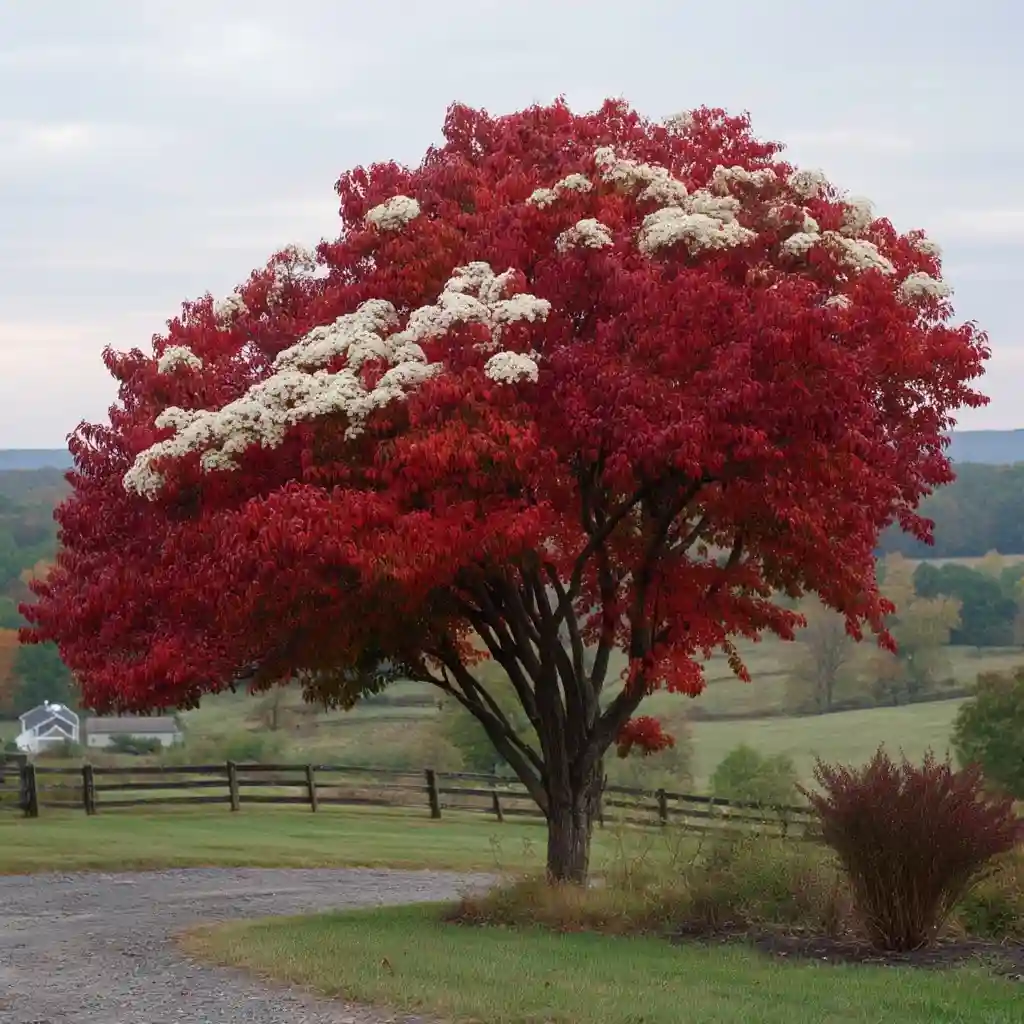
Sourwood is a standout among the best fall trees for color, producing glossy green leaves that turn a vivid crimson red when autumn arrives. In summer, it graces the landscape with drooping clusters of fragrant white flowers, which provide nectar for bees and add visual interest long before the leaves change.
Growing 20 to 50 feet tall, this tree thrives in acidic, organically rich, well-drained soil and prefers full sun for the best color. Hardy in USDA zones 5 to 9, sourwood’s combination of summer blooms and brilliant fall foliage makes it an exceptional choice for adding both seasonal variety and pollinator-friendly benefits to your yard.
13. White Oak
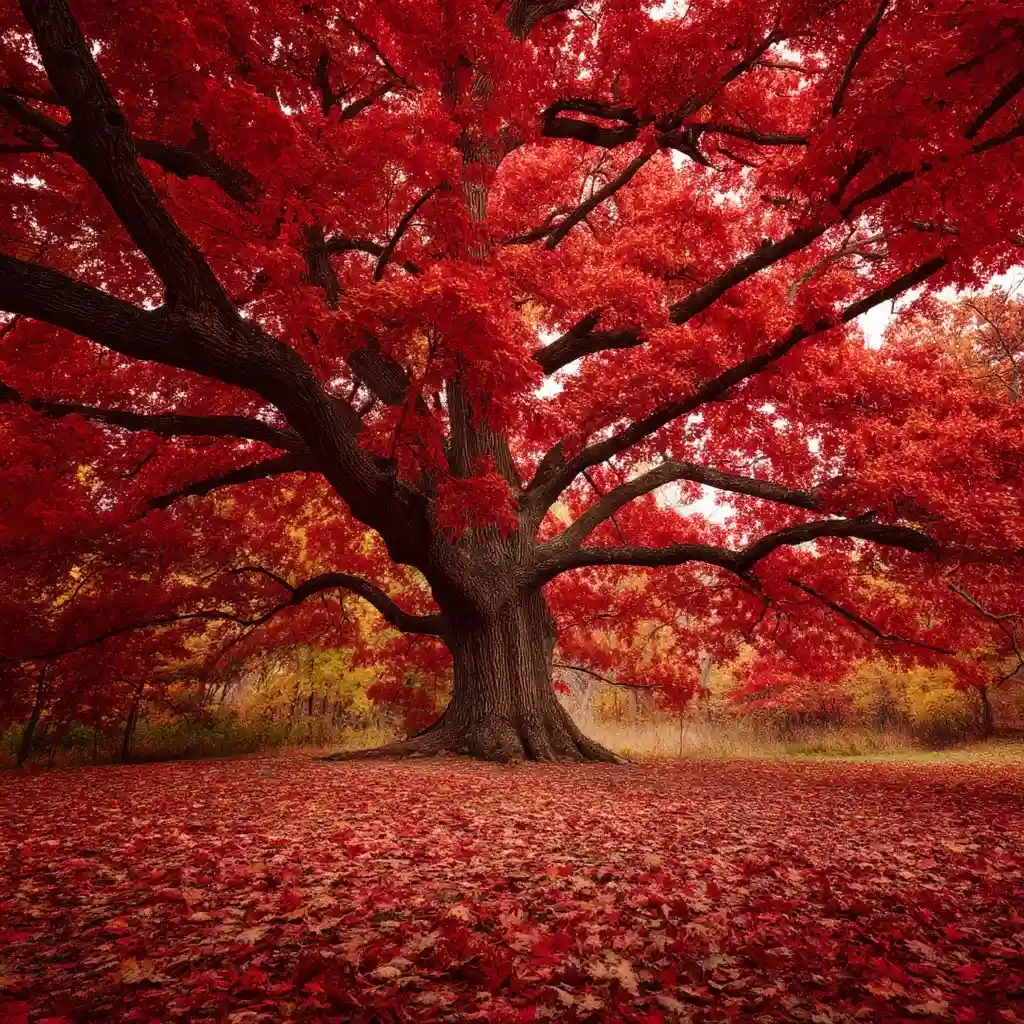
The white oak is one of the best fall trees for color, offering a rich display of red to burgundy foliage each autumn. Known for its broad, spreading crown and long branches, it becomes an impressive centerpiece in open landscapes. In its youth, the leaves turn brighter shades, while mature trees often show a deeper, more muted red.
This long-lived tree can reach up to 80 feet tall and thrives in USDA zones 3 to 9. It prefers rich, moist, well-drained soil and grows best in full sun or light shade. Beyond its beauty, white oak is valued for its strong wood and the acorns it produces, which provide an important food source for wildlife.
14. Bald Cypress
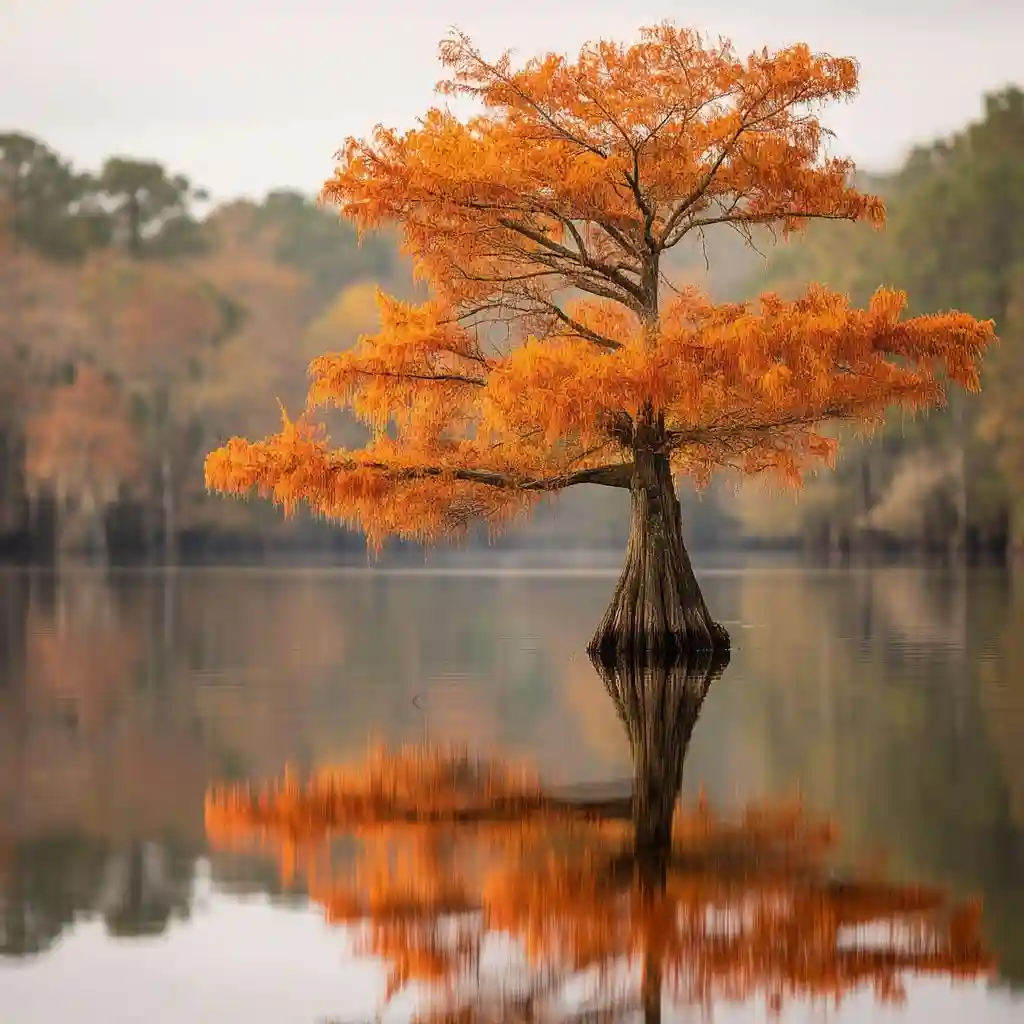
The bald cypress is a unique addition to the best fall trees for color, showcasing soft, feathery foliage that turns a warm orange to cinnamon-brown in autumn. Unlike most conifers, it’s deciduous, meaning it drops its needles each year, creating a surprising seasonal change.
Reaching up to 70 feet tall, the bald cypress thrives in USDA zones 4 to 10 and adapts to a wide range of soil conditions, from soggy swamps to drier urban yards. It prefers full sun for optimal growth and color. Known for its distinctive “knees” that sometimes grow from its roots in wet environments, this tree adds texture, character, and beautiful fall color to any landscape.
15. Flowering Dogwood
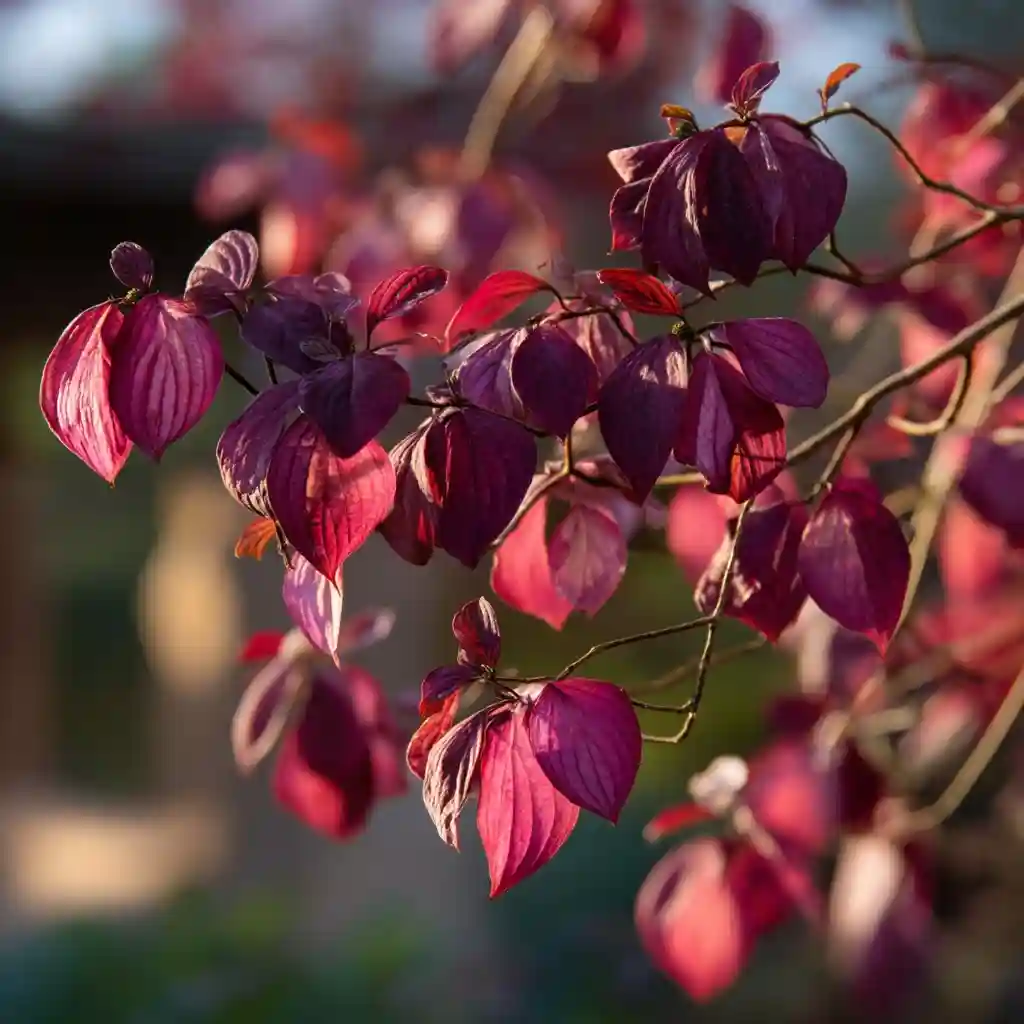
The flowering dogwood earns a place among the best fall trees for color with its deep red to burgundy foliage in autumn. Known for its spring display of delicate white or pink blossoms, it offers beauty in multiple seasons. Its tiered branching structure also adds architectural interest to the garden, even in winter.
Typically reaching 15 to 30 feet tall, the flowering dogwood thrives in USDA zones 5 to 9. It prefers rich, well-drained soil and grows best in partial shade, though it can adapt to full sun with adequate moisture. With its multi-season appeal and manageable size, this tree is an excellent choice for enhancing curb appeal in both small and large yards.
Conclusion
Planting the best fall trees for color can turn your yard into a seasonal masterpiece year after year. Whether you prefer the fiery reds of a sugar maple, the golden brilliance of a ginkgo, or the multi-hued beauty of a sweetgum, there’s a perfect tree for every climate and space. By choosing the right species for your region and planting them in optimal conditions, you’ll enjoy a stunning autumn display that only grows more beautiful with time.
FAQs
What trees turn red in autumn?
Some of the best fall trees for color in shades of red include:
Red maple
Northern red oak
Black cherry
Kousa dogwood
White oak
Sourwood
Sweetgum
Black gum
Black oak
Bradford pear
Scarlet oak
Paperbark maple
Autumn Blaze maple
Which trees have purple leaves in fall?
For purple tones, consider:
Sweetgum
Smoke tree
Oakleaf hydrangea
Eastern ninebark
Virginia creeper
Which trees turn yellow in fall?
Bright yellow favorites include:
Aspen
American beech
Tulip poplar
Ginkgo
Which trees show orange fall foliage?
Orange shades can be found in:
Sugar maple
Japanese persimmon
Japanese maple
Serviceberry
Sumac
When is the best time to plant fall trees?
For most species, autumn is the ideal planting season. Warm soil and cooler air reduce stress on the tree while encouraging root growth. Less frequent watering is needed compared to summer planting.
Which trees can be planted in fall?
Trees with shallower, fibrous roots adapt best to fall planting. Excellent options include:
Alder
Ash
Buckeye
Crabapple
Hackberry
Hawthorn
Honey locust
Elm
Maple
Sycamore
Pines and spruces
🌿 Love gardening inspiration? Follow me on Pinterest for bold plant ideas, tips, and seasonal color!
More Posts
